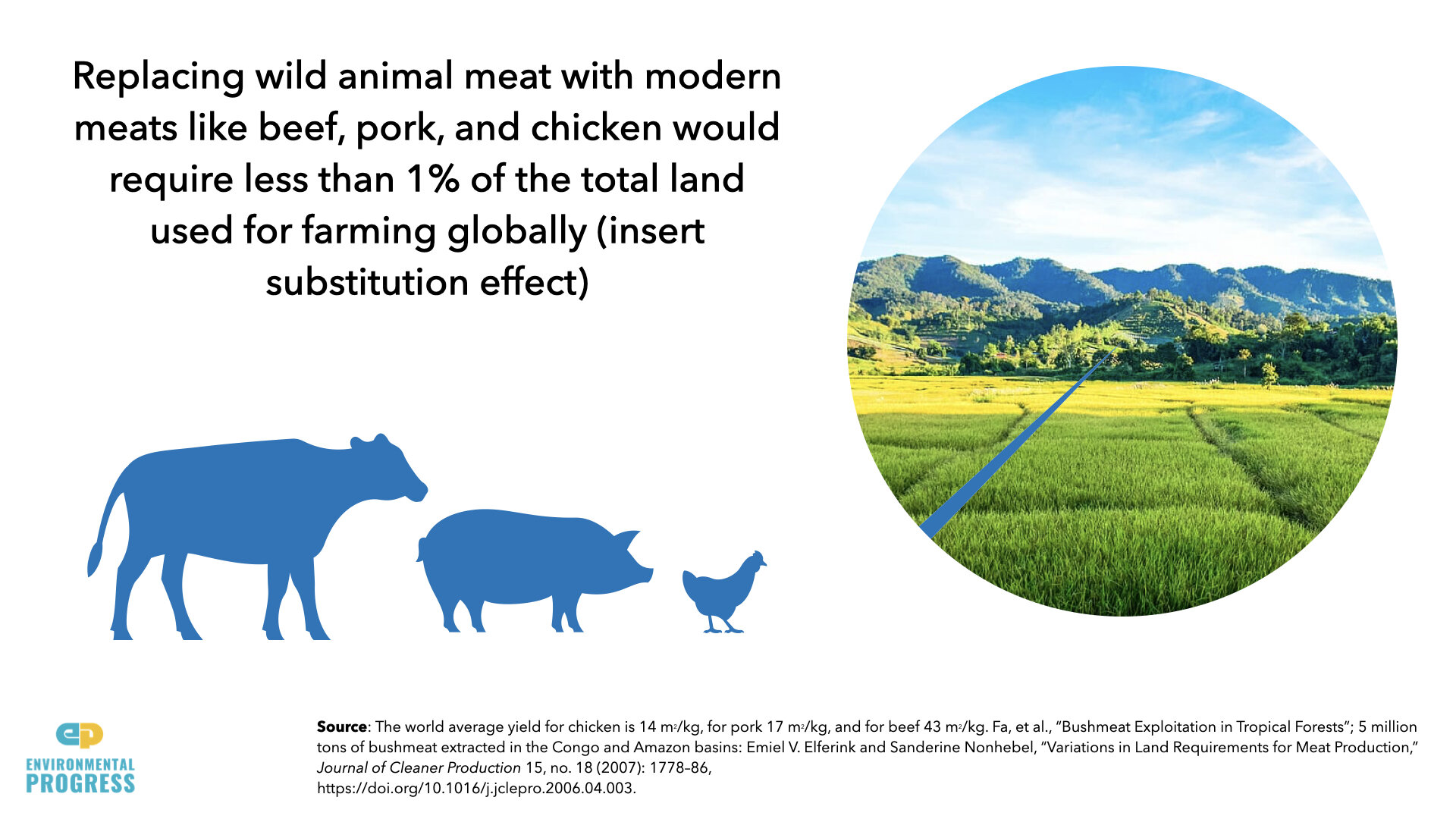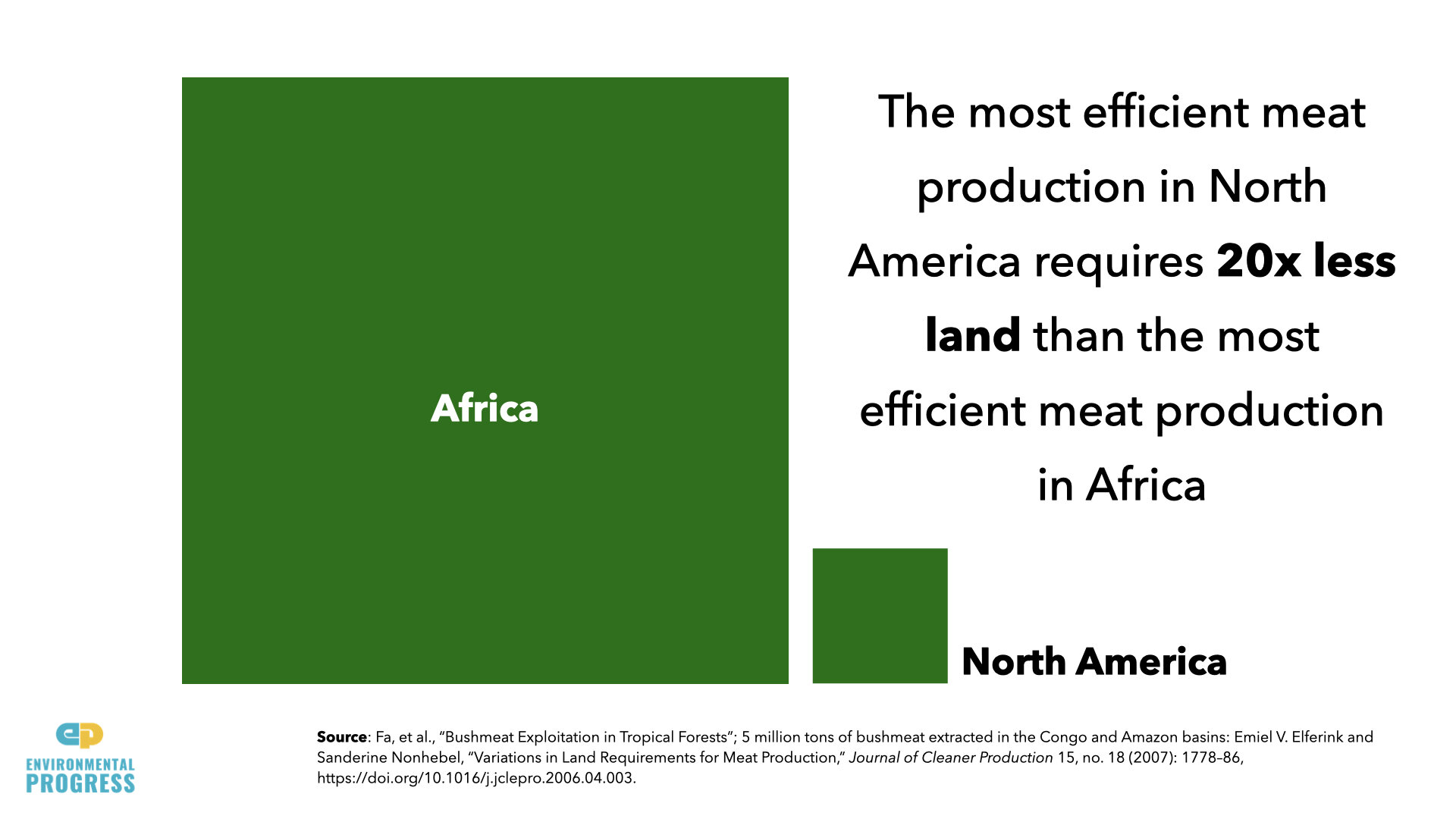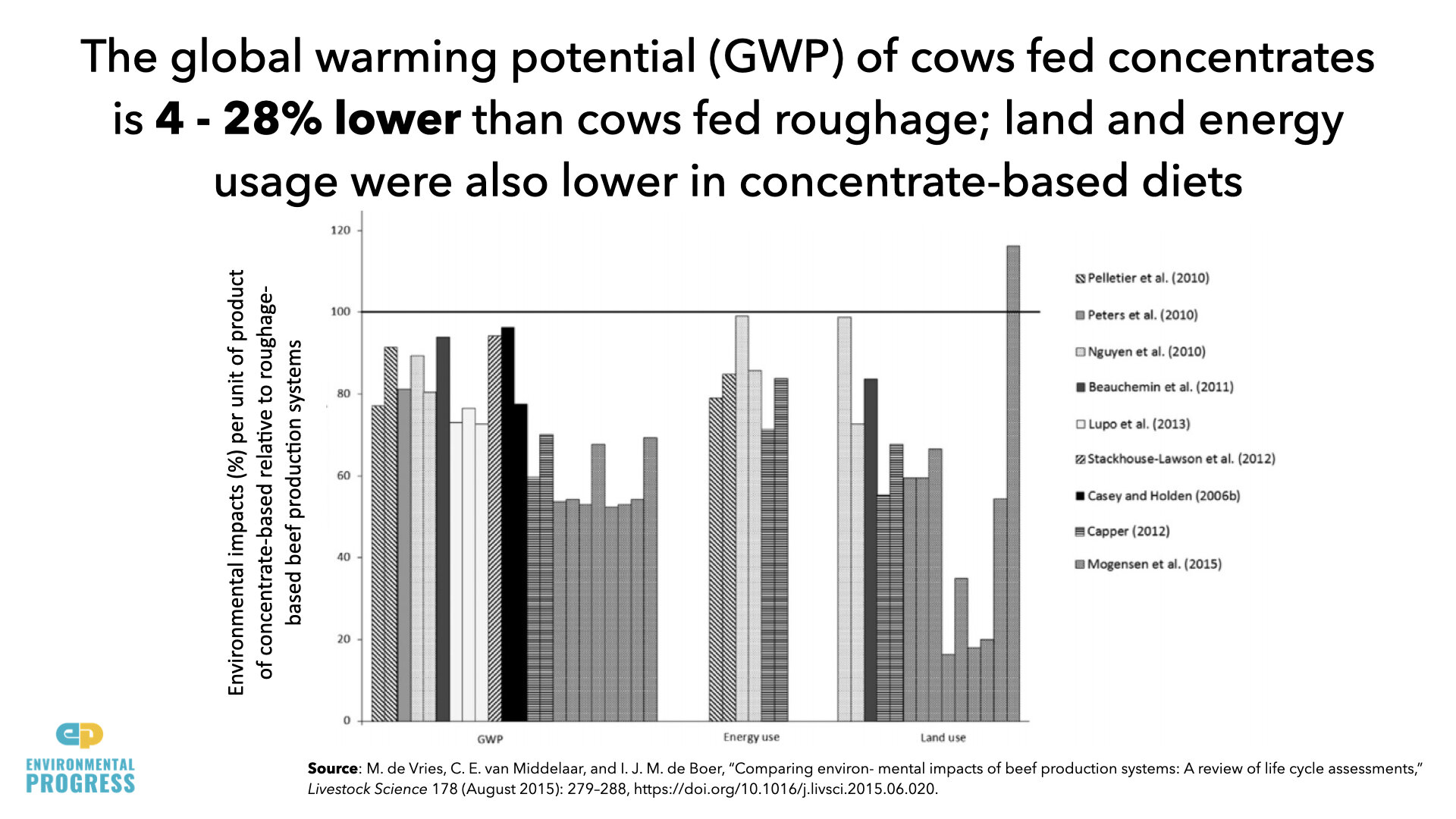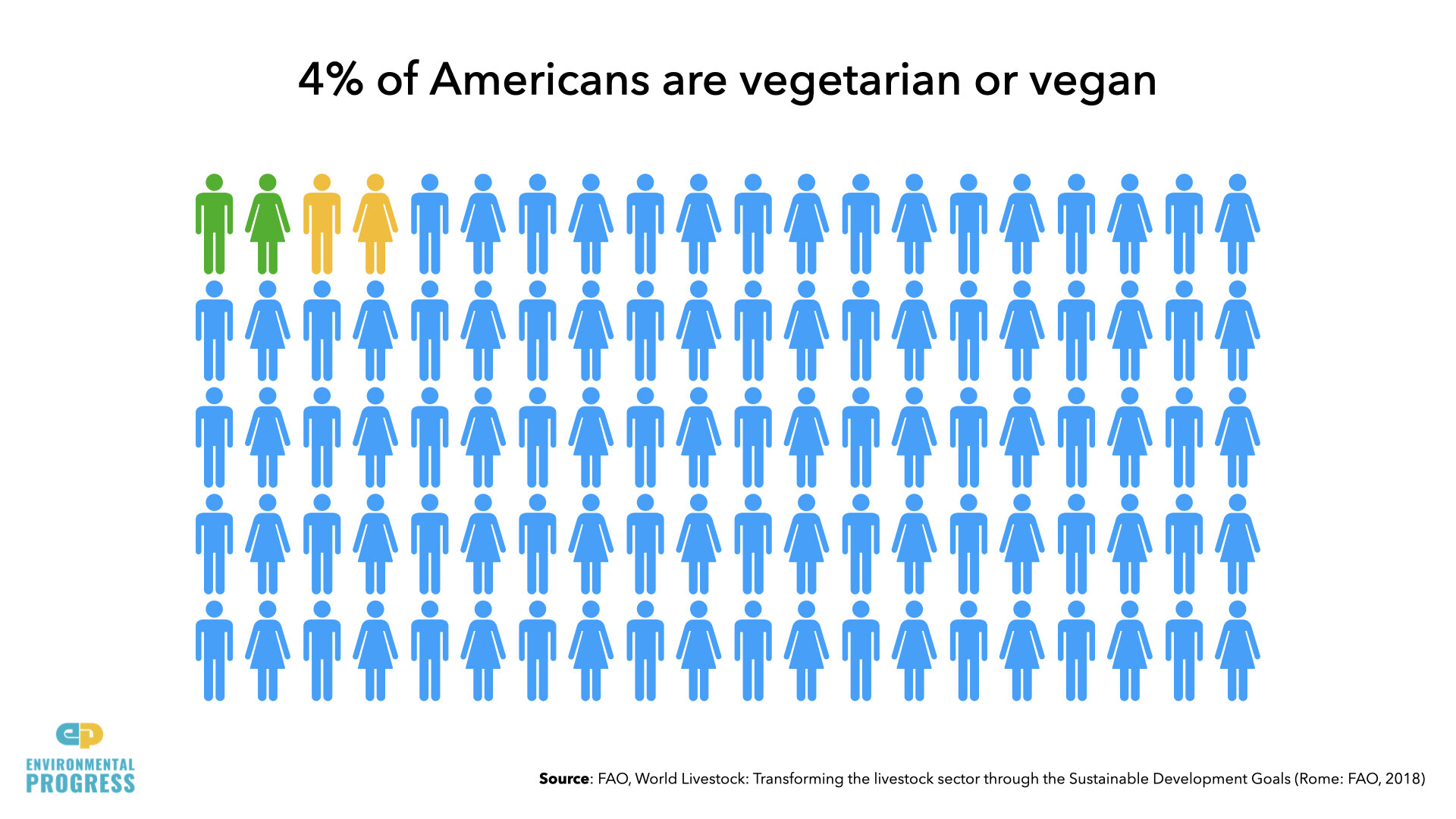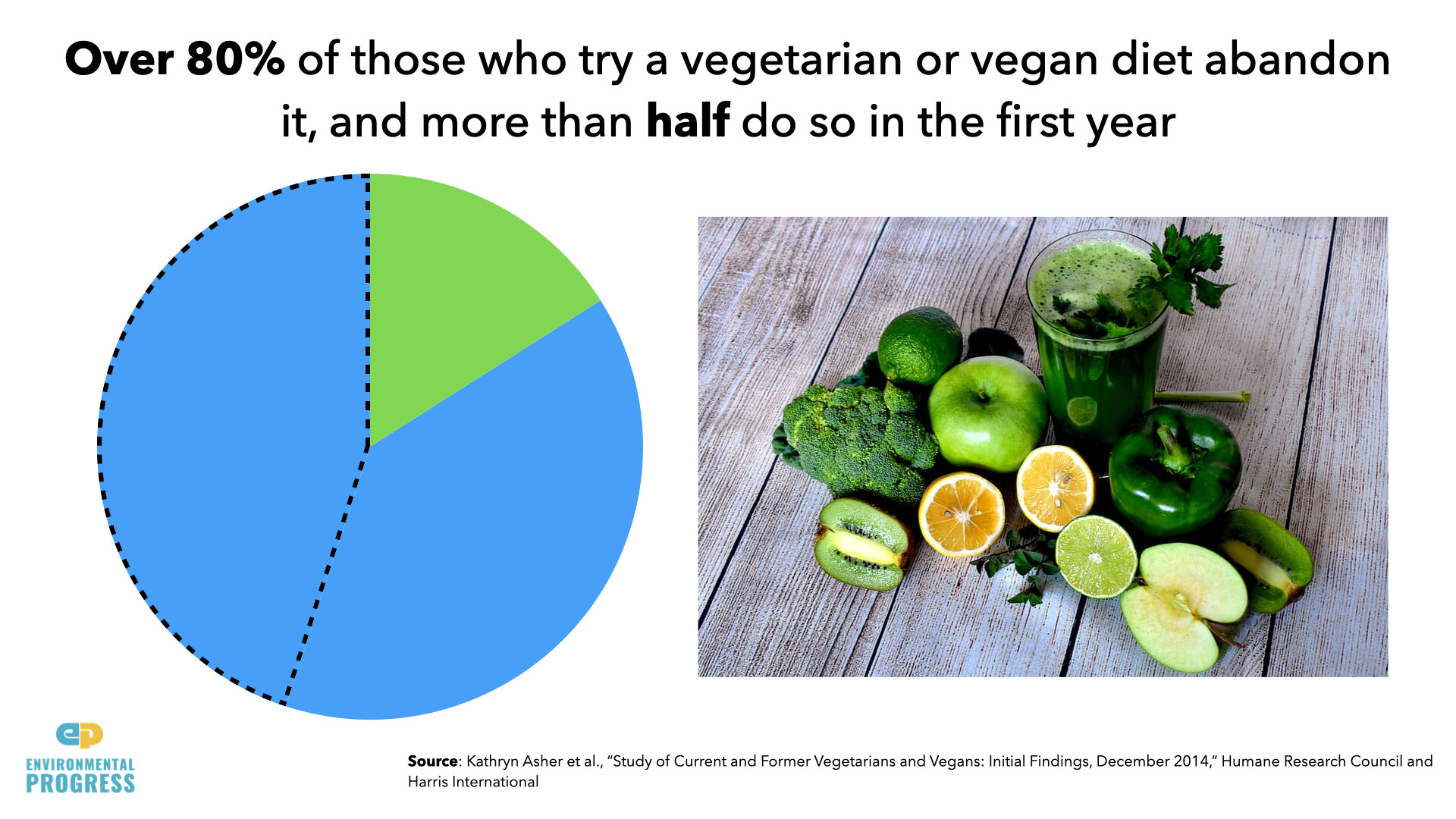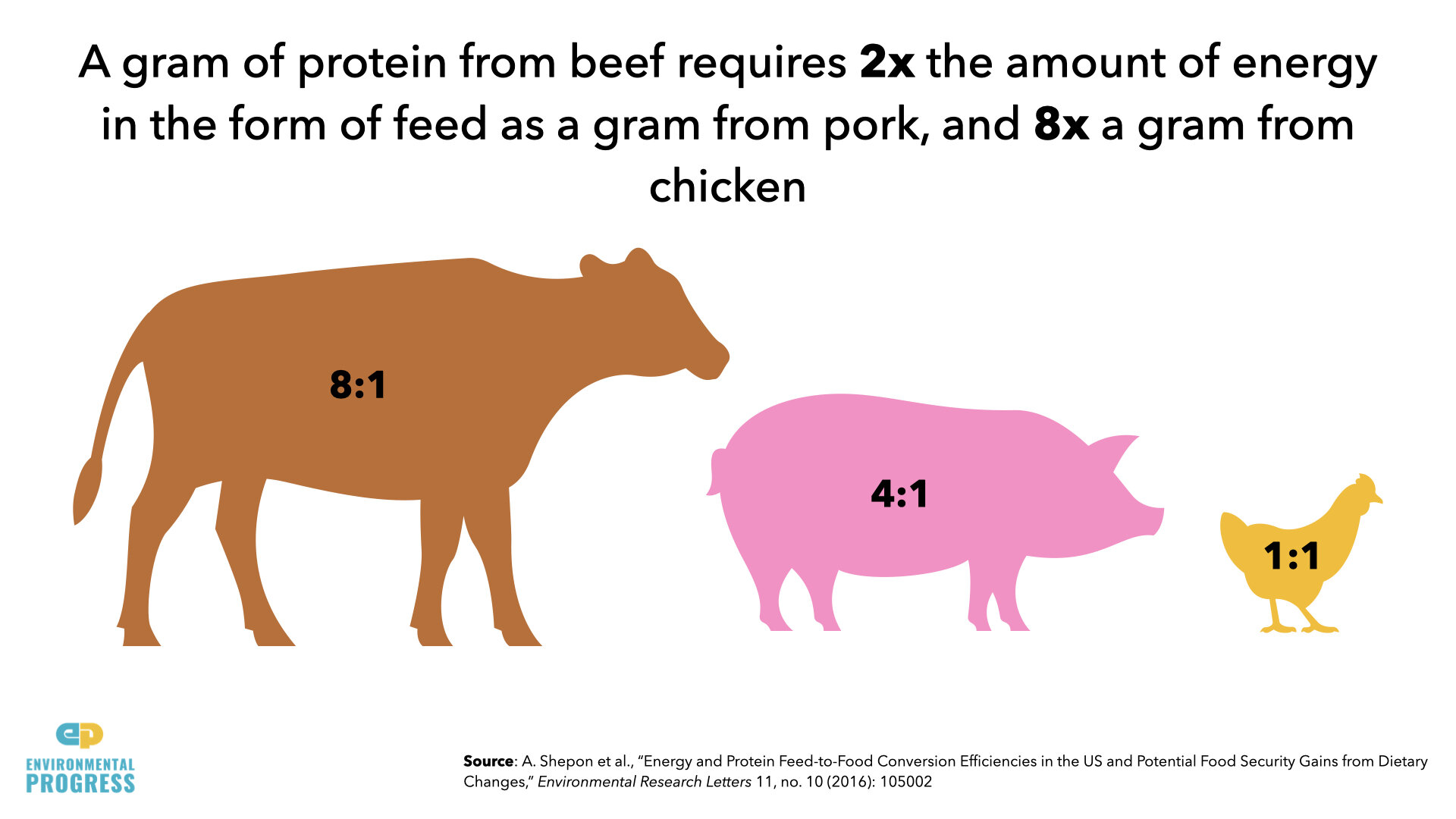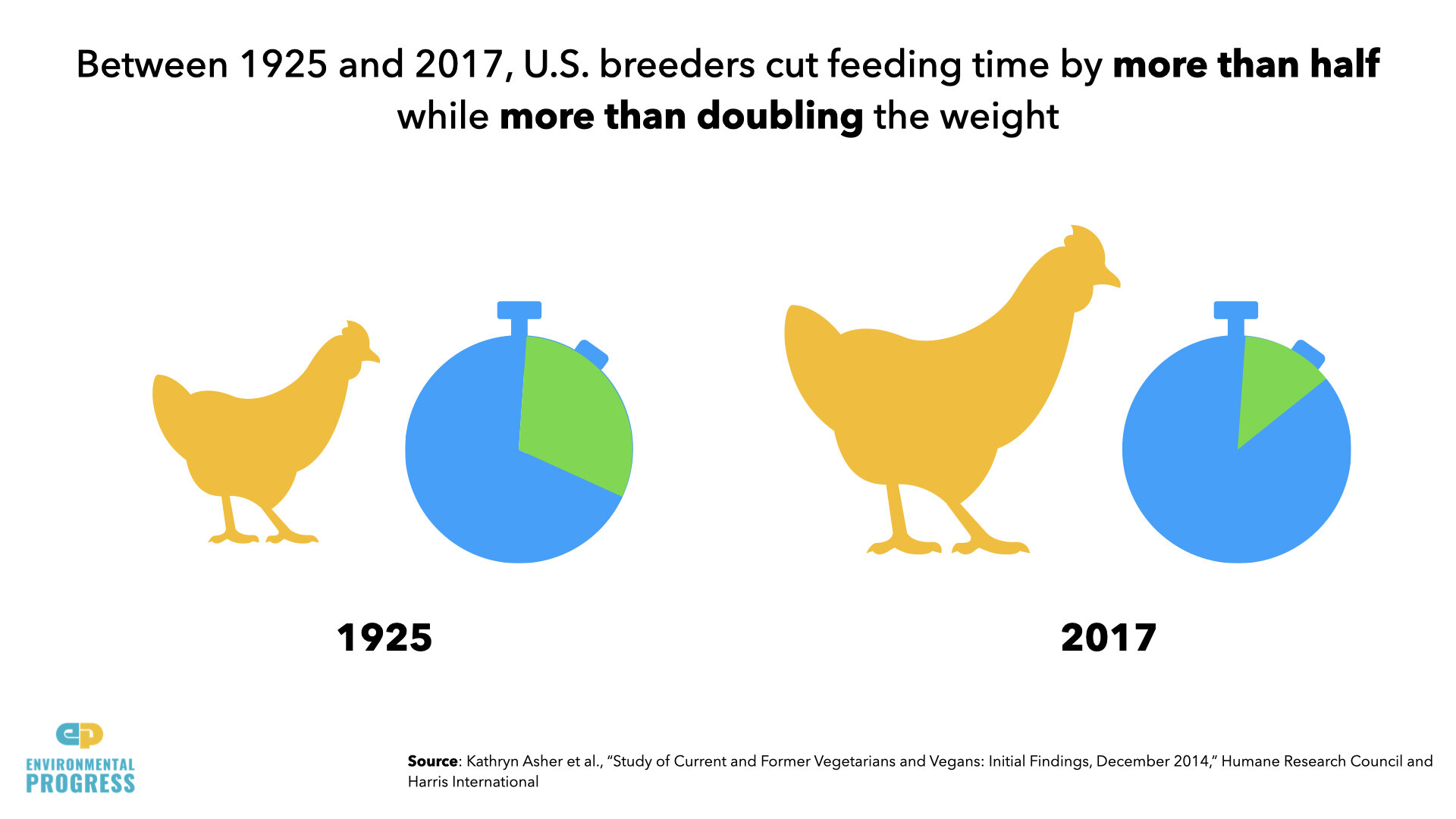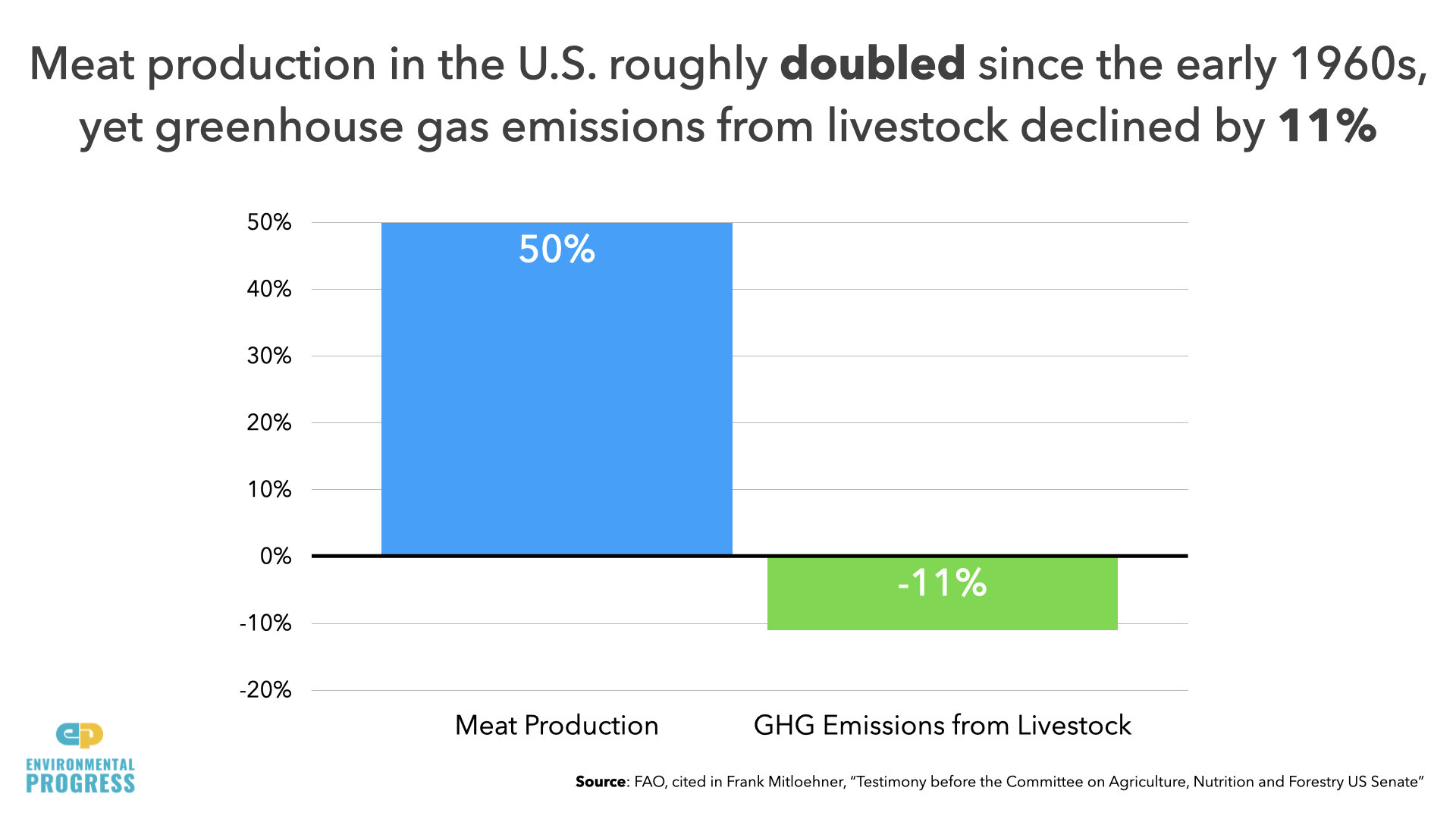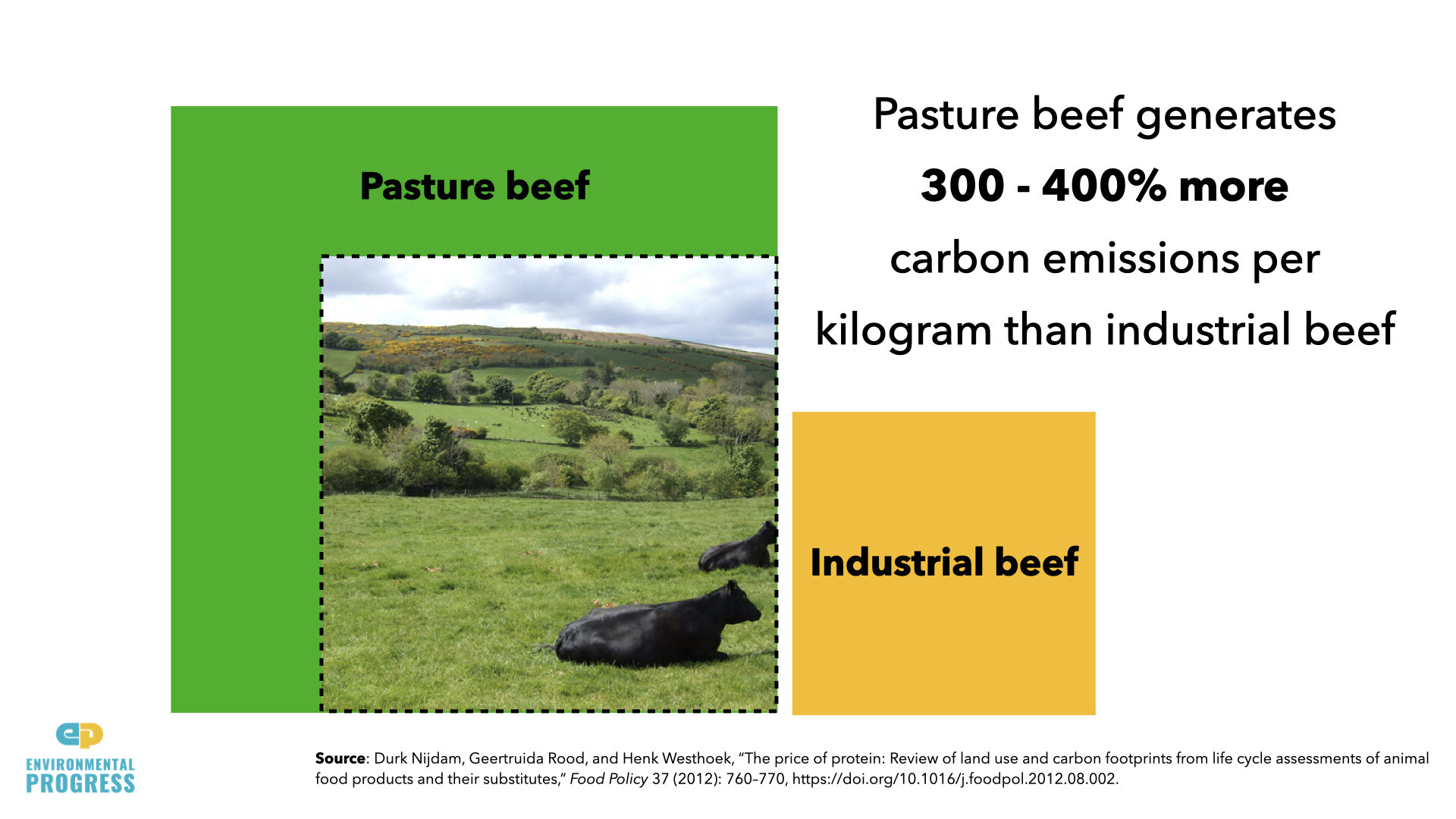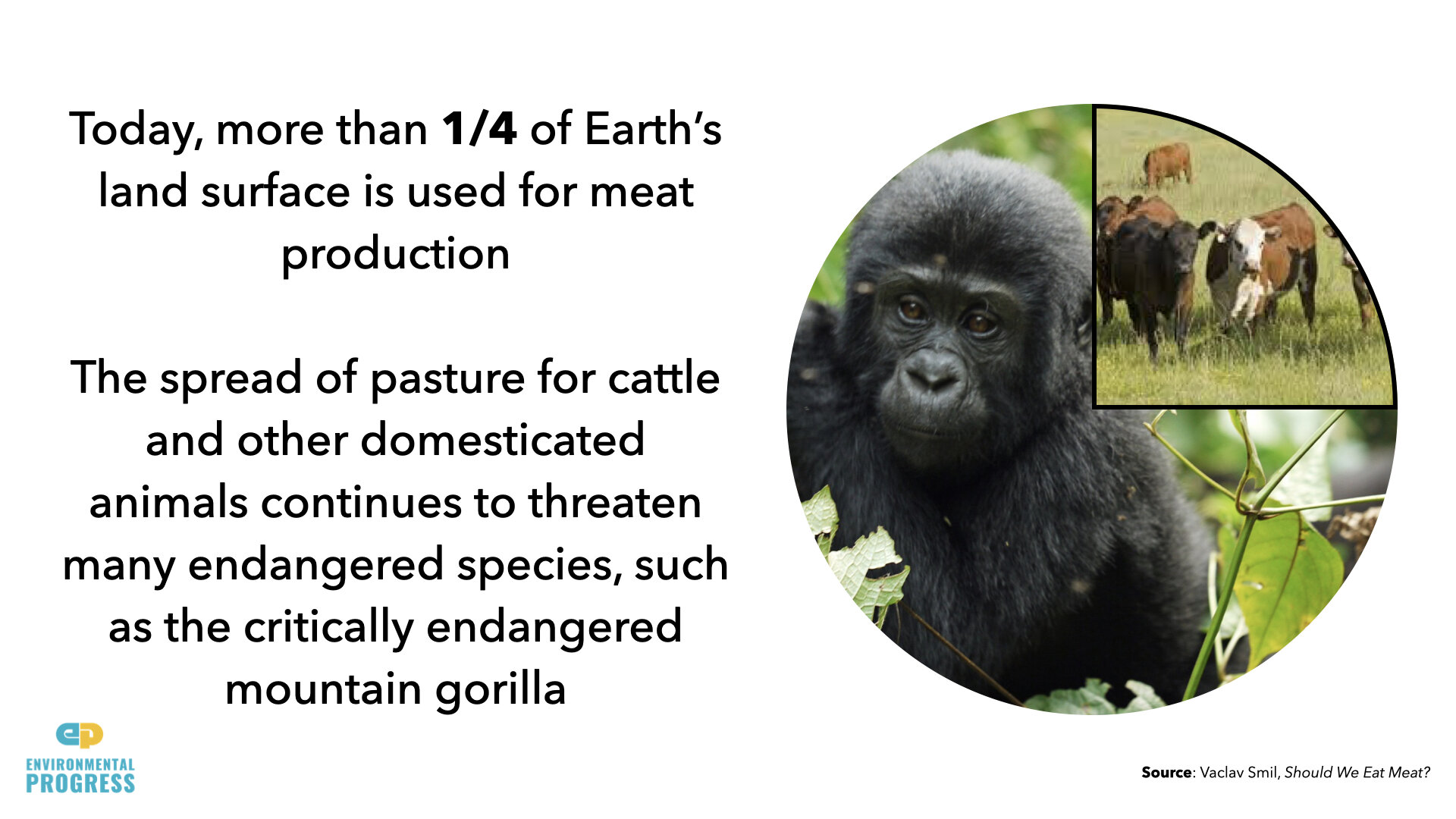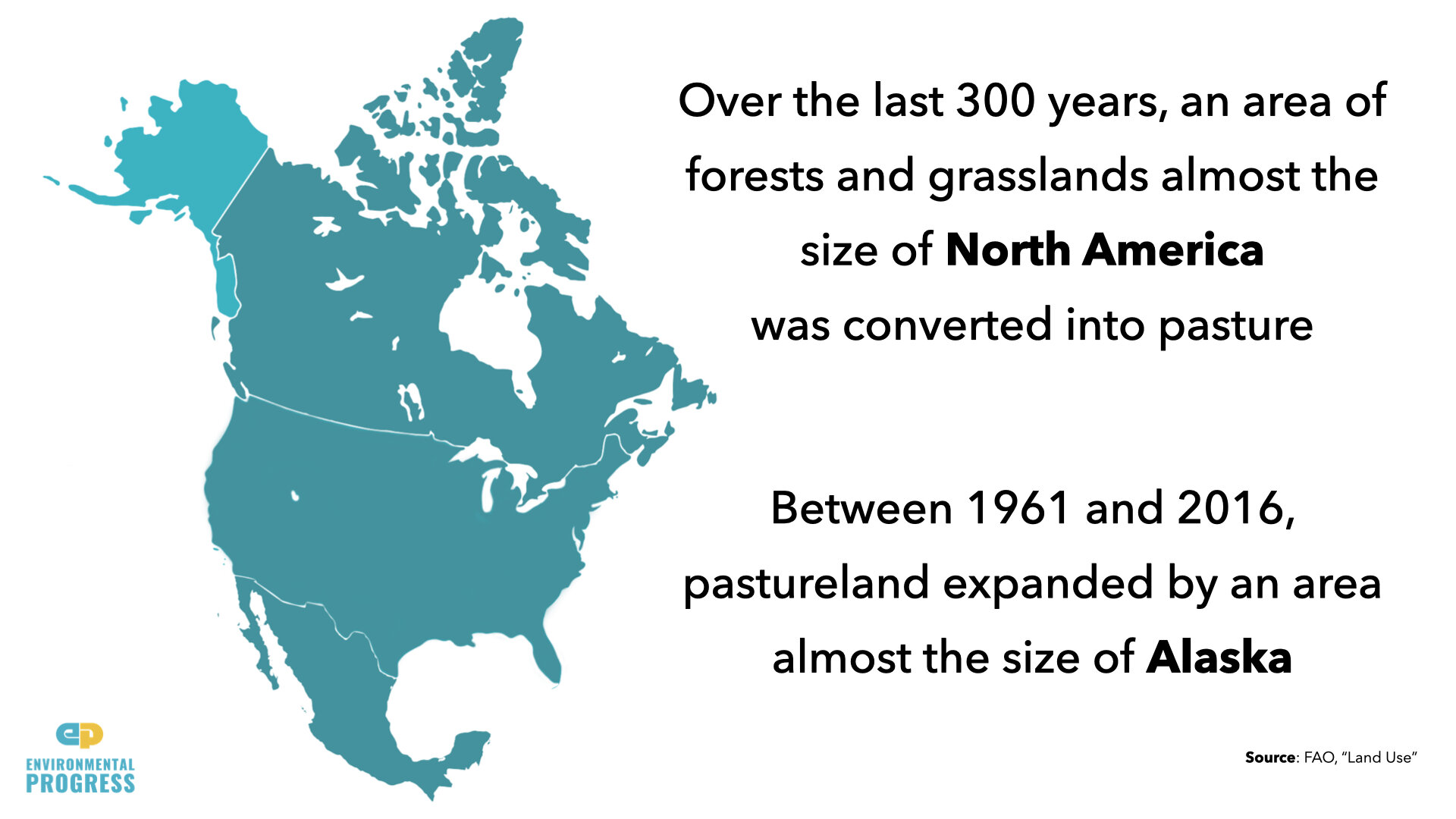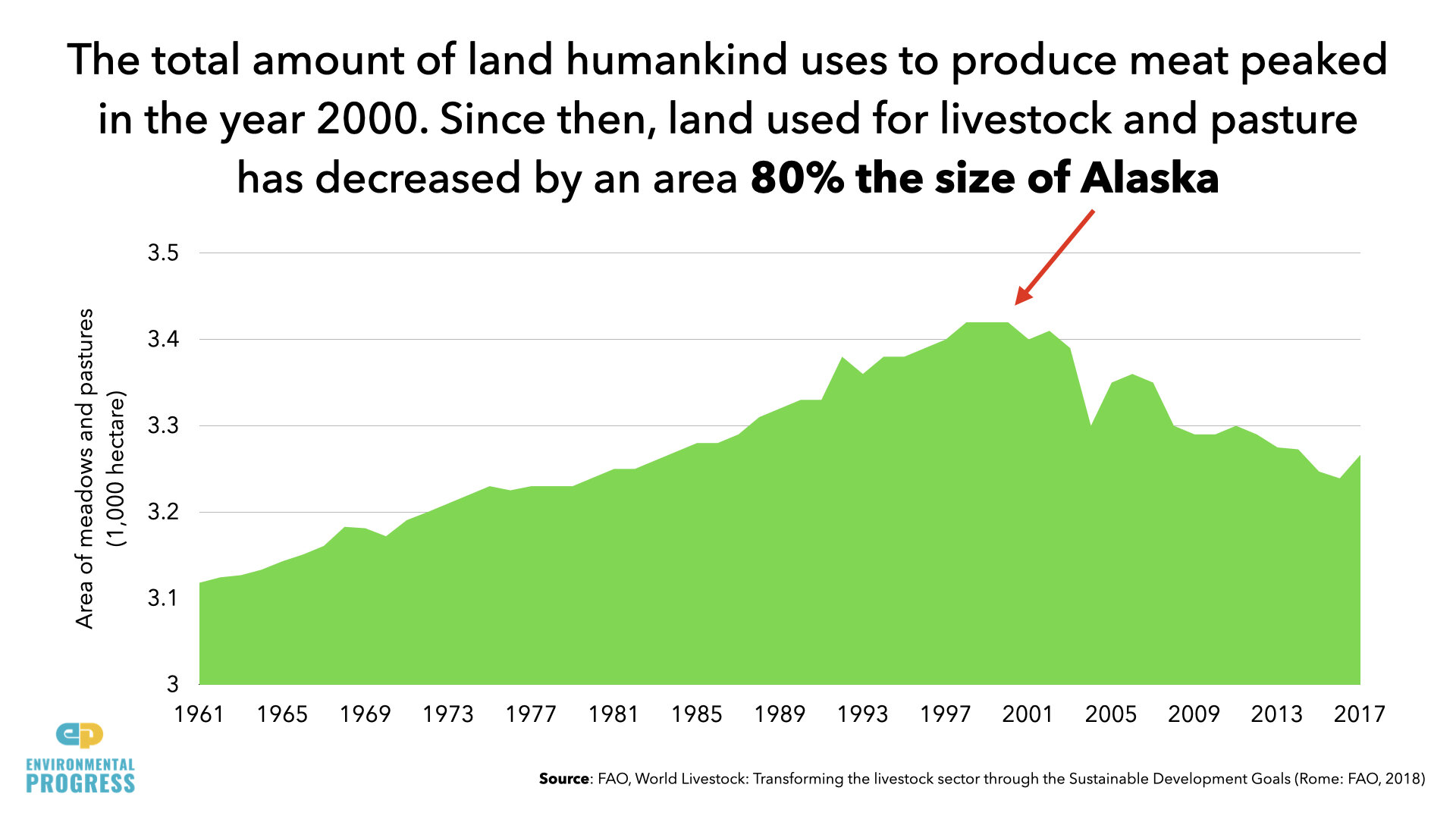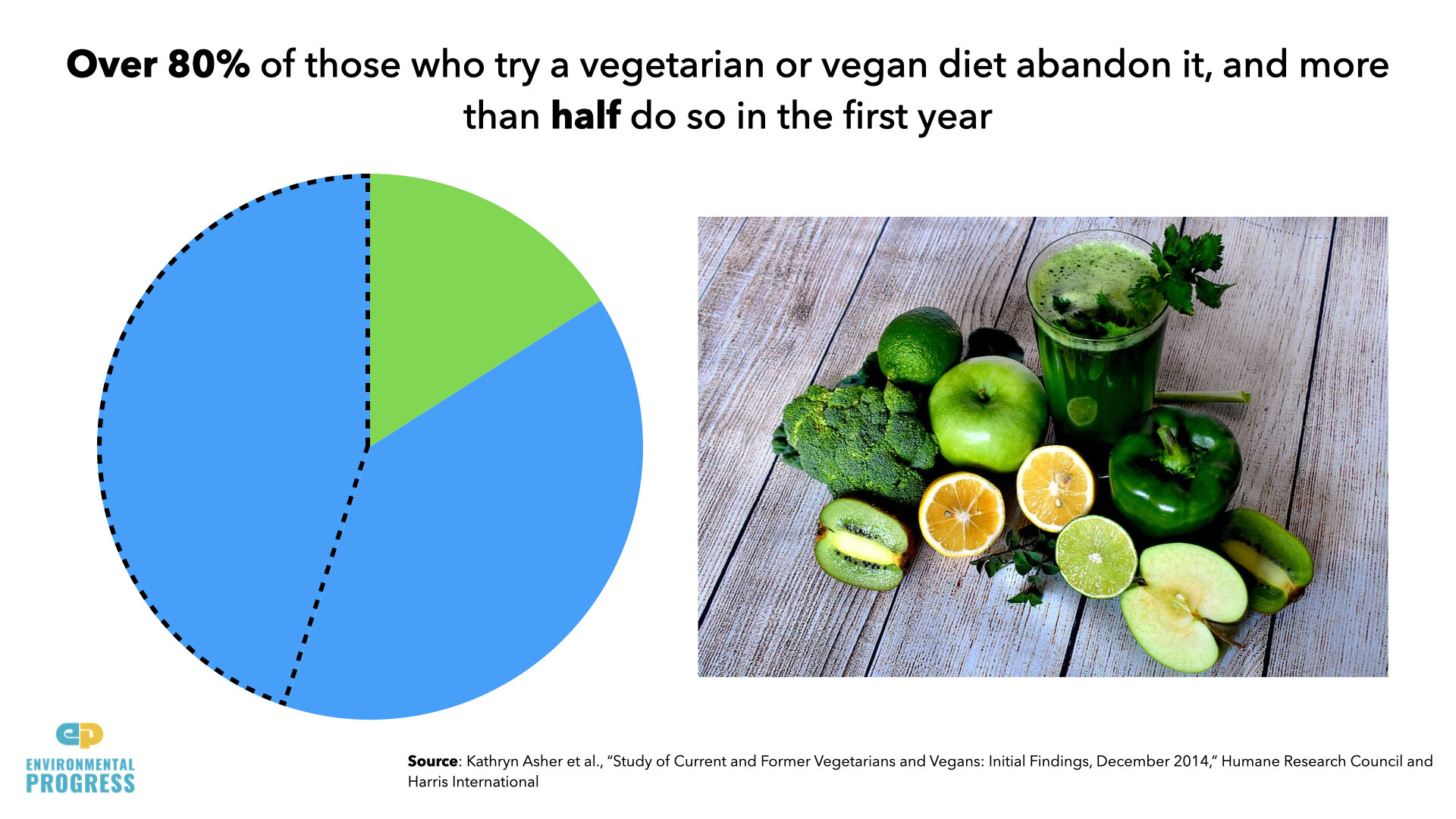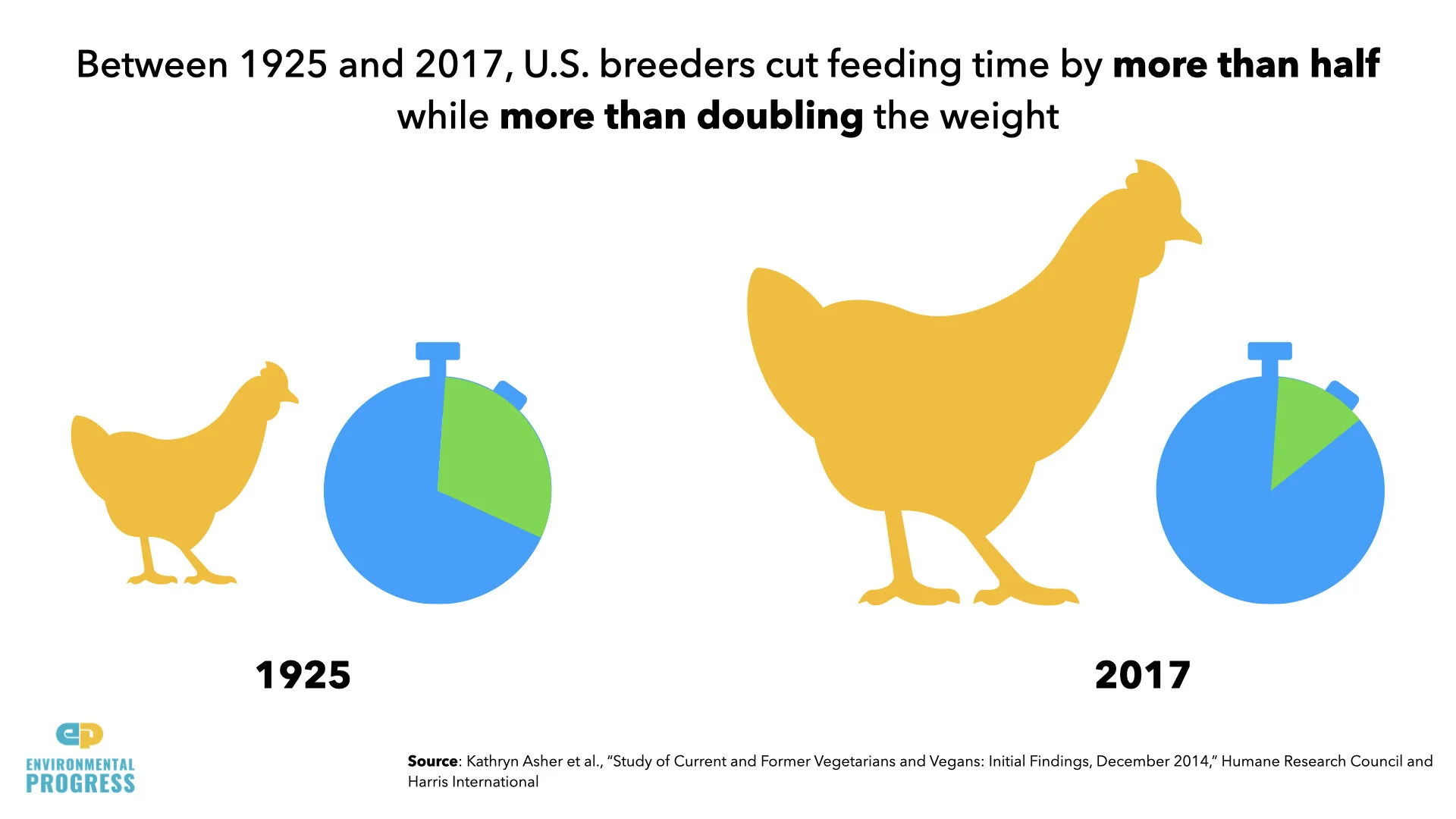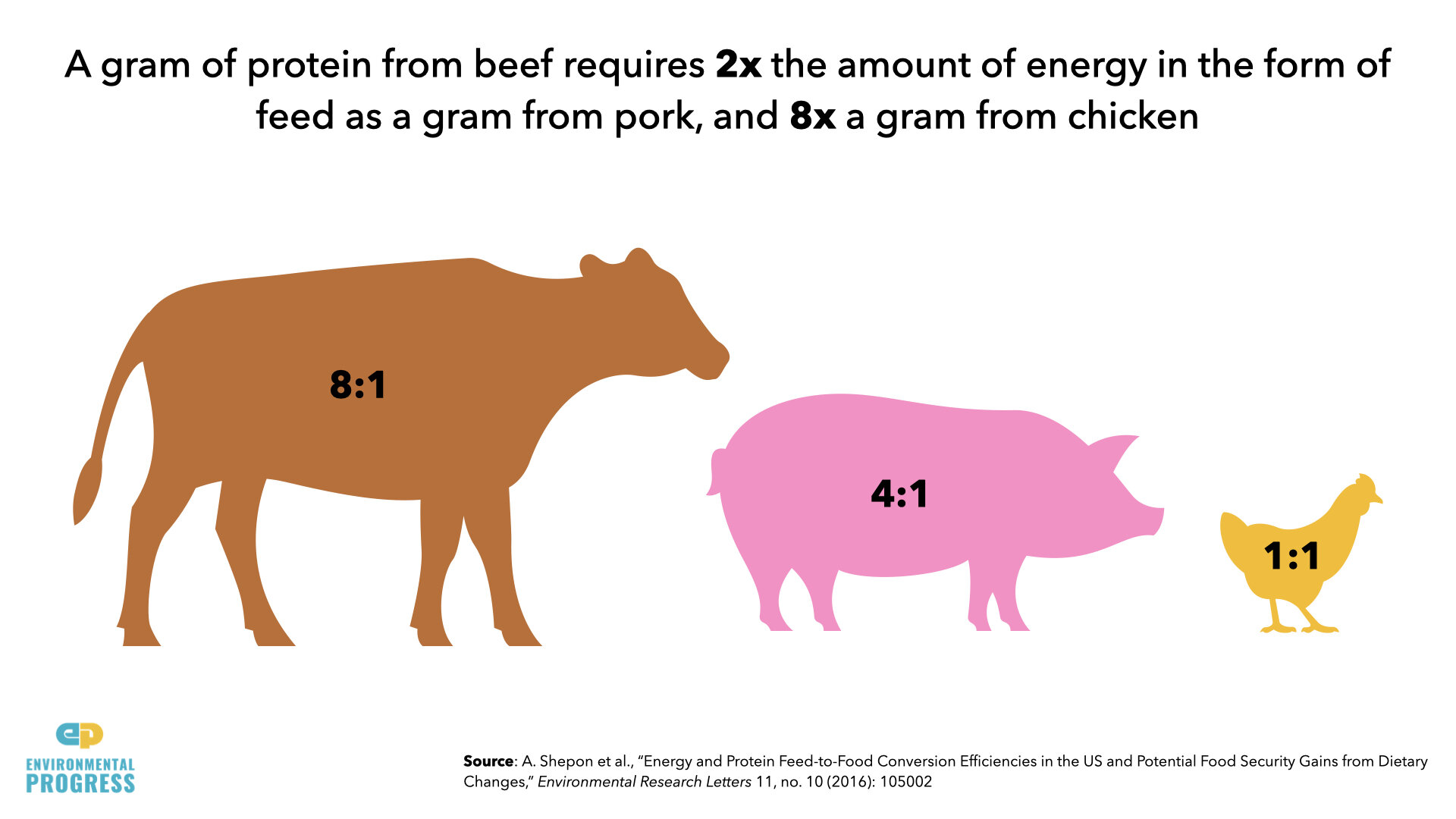Bottom Line:
Switching to a meat-free diet is not a very productive way to fight climate change or protect the natural world. But we can and should continue to improve the meat industry by:
Making meat production more efficient (more meat from less land and resources)
Ensuring the enforcement of robust animal welfare regulations
Reducing the carbon intensity of our energy supply
FAQ
Is meat significantly contributing to climate change?
Meat production does emit CO2, the major greenhouse gas contributing to climate change. However, we were surprised to find that the emissions contribution of the meat industry isn’t as substantial as is commonly thought.
You may have heard this statistic or others like it: if everyone in the world followed a vegan diet, land-based emissions could be cut by 70 percent by 2050. The 70 percent decrease in emissions only refers to agricultural emissions, not total greenhouse emissions. Agricultural emissions only comprise a fraction of total emissions.
So, even if humans completely ceased to consume animal products, and all livestock land were reforested, total carbon emissions would decline by just 10 percent.
That 10 percent of all carbon emissions might still look like a big number. But consider the task of changing all meat-based food cultures around the world, or the policy work that would be required to ban the consumption of animal protein. Not only does it seem infeasible, it also seems ill-advised, given that such a ban would disproportionately affect people in developing nations and those living in abject poverty.
Won’t going vegetarian/vegan still help to reduce the impact of the meat industry?
It makes sense to think that not eating meat would contribute to emissions reductions: if the industry can’t make as much money, it won’t produce as much meat, and therefore won’t emit as much CO2. But it turns out that isn’t the end of the story.
Instead, study after study shows that going meat-free en masse doesn’t lower carbon emissions to the extent we’d hoped. Why is that?
First of all, it is difficult to sustain long-term. About 80% of those who try to become vegetarian or vegan abandon their diet, and more than half do so within the first year.
But even if every American reduced their meat consumption by one-quarter, greenhouse emissions would be reduced by just 1 percent. And if every American became vegetarian, US emissions would drop by just 5 percent.
This can be explained by the rebound effect: the money that people save by switching to plant-based diets gets spent on other things that also use energy and result in emissions (buying flights, tech products, clothing, etc.).
Doesn’t meat production require a lot of land and resources?
The land use requirements of a meat-based diet are certainly something to seriously consider. Meat production represents humankind’s single largest impact on natural landscapes. Today, humans use more than one-quarter of Earth’s land surface for meat production. And the spread of pasture for cattle and other domesticated animals continues to threaten many endangered species, including mountain gorillas and yellow-eyes penguins.
Fortunately, the total amount of land humans use to produce meat peaked in the year 2000, meaning the land dedicated to livestock pasture around the world has decreased over the past 20 years.
And it’s not just the meat industry’s use of land that has improved. By making changes to livestock breeding and diet, in addition to improving animal health, we are able to produce more meat using less resources.
America provides a great example: meat production roughly doubled in the United States since the early 1960s, but we found that greenhouse gas emissions from livestock declined by 11 percent during the same period.
Are there approaches to meat production that are more environmentally-friendly than others?
Yes! Highly intensive industrial meat farming produces far less carbon emissions than extensive organic farming techniques. Factory farming also takes up far less land, meaning more green space for wildlife to flourish. Pasture beef requires significantly more land and produces 3 to 4 times as much emissions per kilogram than industrial beef. And since grass-fed cows gain weight more slowly and live longer, they produce more manure and thus more methane.
As we gain efficiencies and experience, we are able to significantly reduce the environmental impacts of meat production without having to eliminate consumption entirely.
Aren’t industrial meat farms cruel?
It’s true that industrial meat farms have historically been cruel to animals. Activists and experts like Dr. Temple Grandin have worked to improve the conditions in the industry with remarkable success.
Grandin’s audits eventually made more than fifty farms more humane and more efficient, and her recommendations have been taken up by industrial facilities the world over.
While she still believes that the industry can improve, she recognizes the progress that’s been made: “Compared to the bad old days, it’s drastically improved, and I mean drastically.”
The work of Dr. Grandin to improve the welfare of animals farmed for meat has even been acknowledged by PETA and other animal rights activist organizations. Luckily, reducing the environmental impacts of meat production does not have to come at the expense of animal welfare.
Are some meats better than others?
Different meats require different resource and energy inputs. For example, a gram of protein from beef requires two times the energy input in the form of feed as a gram from pork, and eight times a gram from chicken. By that metric, chicken production could be considered more environmentally-friendly than beef or pork.
However, just like converting the world to a plant-based diet, banning red meat would require a huge shift in individual behavior and cultural practices. Continuing to reduce the environmental impact of meat through learning and innovation is a proven and seemingly more practical route.
What about lab-grown meat?
Lab-grown meat may be a great alternative to factory-farmed meat in the future. However, the technology is far from being available on a mass scale, and remains quite expensive. Advancements in this area will be necessary before lab-grown meat can be a viable alternative to factory farmed meat.
For now, it is more important to help institute industrial farming practices in developing countries so they can consume more protein while protecting their natural landscapes.
Meat Slides
